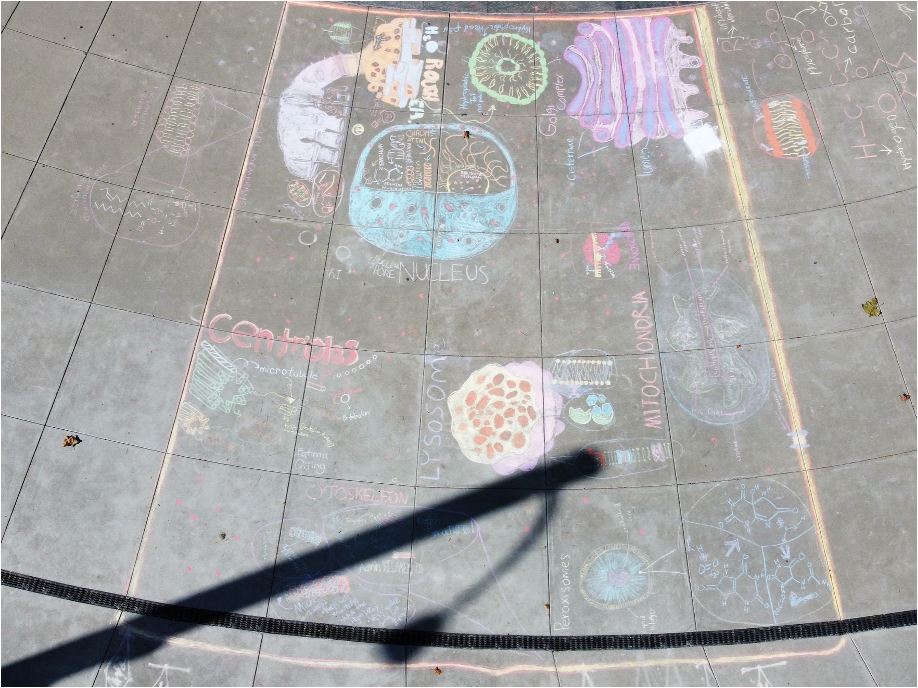“One way a cell can bring something inside itself is by covering that thing in membrane—we saw this in our lab that when you cover your hand in bubbles, then you can push your hand through a bubble [without popping it].”
9th Grade Biochemists are wrapping up a unit on cell structure and function with some challenging reading, model-based research, a large expressive group project, and individual analysis and reflection. This week, in small teams, they each produced a piece of a very large sidewalk chalk drawing of a eukaryotic cell in downtown San José (Check out this aerial photo, taken by a student and a drone.) Each small team was responsible for researching and capturing both essential pieces of their organelle’s structure, and also its interactions and importance. Teams’ drawings include labels, chemical equations of processes the organelle completes, structural details, molecular models, and “zoomed in” bits to show even more fine grain features.
As they researched and drew, they also read and discussed a chapter of their class text, Story of Life: Great Discoveries in Biology by Sean Carroll. In it, they learned about the early life and contributions of Lynn Margulis to the understanding of animal cell origin: “I think Lynn Margulis did more for science in the 20th century than many people we study… At a time when people were really interested in competition, she wondered about the role of cooperation in evolution.”
I think Lynn Margulis did more for science in the 20th century than many people we study… At a time when people were really interested in competition, she wondered about the role of cooperation in evolution.
Students wondered, “So it’s like a prokaryote ate another prokaryote then became a eukaryote?”
And, “So we basically have a bunch of bacteria that are organelles inside our cells? How did it transform from a bacteria to an organelle?”
Finally, their homework this coming week will challenge each of them to individually explain and reflect on their class’s cell drawing, what it contains, and what it leaves out. In addition to reflecting on and explaining the organelle they researched, they will also explain and then critique another group’s representation. Prompts include questions like, List three aspects of cell function that the drawing doesn’t show and suggest an alternative that would be capable of showing these. Their independent reflection also includes an AI-copilot assignment to find a scholarly article about an organelle, asked an AI Chat Application to summarize the article in 500 words, then turn-in the summary produced, and reflect on how this process influenced their understanding of cell structure and function. Through hands-on experience, discussion, storytelling, research, and model-building, our students both develop robust understanding of cell biology, and also engage in the habits and practices of science, participating actively in a long lineage of thinkers whose work they stand upon.

